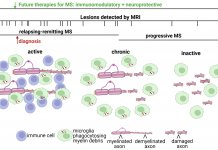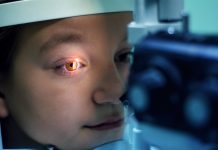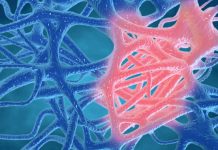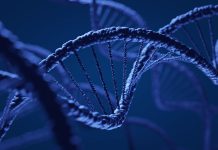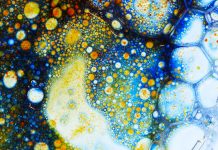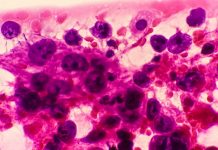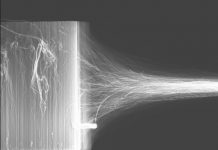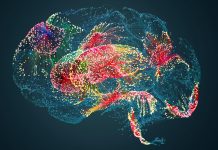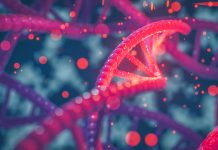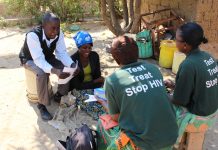Home 2023
Archives
Can we do drug repositioning without disease gene expression?
Chuo University’s Professor Y-h. Taguchi examines the application of cutting-edge single-cell-based measurements in drug repositioning.
Targeting the central nervous system: The future of therapeutic strategies for MS
Tara M. DeSilva from the Department of Neurosciences, Cleveland Clinic, looks at the future of therapeutic strategies for MS, focusing on targeting the central nervous system.
Decarbonising the world economy with synthetic biology
Macquarie University Distinguished Professor Ian Paulsen, discusses how synthetic biology can be used to decarbonise the global economy.
Sight loss research: Looking forward to an equitable future
Keith Valentine, Chief Executive of Fight for Sight and Vision Foundation, shares how these newly merged organisations are driving efforts in sight loss research to improve patient care.
CB2R agonists in the clinics: A treasure chest for treating inflammatory diseases
Researchers give an update on clinical trials with CB2R agonists and their potential for the treatment of inflammatory diseases.
Development of a new gene therapy drug as a treatment for hypophosphatasia
The current primary treatment for hypophosphatasia is enzyme replacement therapy; however the development of a new gene therapy drug, ARU-2801, may change the landscape forever.
The next frontier in anti-cancer drugs
Dr Anthony J. Berdis, Case Comprehensive Cancer Center discusses the future of cancer treatments and anti-cancer drugs.
Potential implications of cosmetic BoNT-A use on future treatment options for neuromuscular disorders and...
Given the rise in cosmetic procedures involving BoNT-A, cosmetic physician Dr Mary Dingley discusses the therapeutic implications of antibody-induced resistance on future treatment of various conditions, including post-stroke spacticity and pain disorders.
AARS urzymes: Experimental biochemistry to map genetic coding
Dr Charlie Carter from the University of North Carolina at Chapel Hill explores how advances in enzymology and phylogenetics enable biochemical measurements that could map the ancestral development of genetic coding.
Drug repositioning without the gene expression of disease cells treated with drugs
Y-h. Taguchi, Professor at the Department of Physics, Chuo University in Japan, provides comments on drug repositioning without the gene expression of disease cells treated with various drugs.
Photodynamic Therapy: Killing cancer gently with visible light
Photodynamic therapy, using visible light with lower energy, causes fewer side effects when treating cancer, find Drs. Mary Potasek, Evgueni Parilov, and Karl Beeson, Co-founders of Simphotek, Inc.
The emergence of precision medicine for oncology
Dr Priya Hays, PhD, considers how the rapid development of precision medicine for oncology has impacted diagnosis, treatment, and clinical outcomes in cancer care.
Recording and decoding neural signals from the vagus nerve
Dominique M Durand, distinguished Professor of Biomedical Engineering, Case Western Reserve University, Cleveland Ohio, USA, discusses the study of neural signals from the vagus nerve.
Progress in development of disease-modifying treatments in Parkinson’s Disease
Henri Huttunen, Chief Scientific Officer, Herantis Pharma Plc, charts progress in the development of disease-modifying treatments for Parkinson’s disease.
The function of fingerprints: How can we grip?
Professor Gun-Sik Park, in the Department of Physics and Astronomy at Seoul National University explores the function of fingerprints from a lens of understanding the mechanism of our human ability to grip.
The link between gene expression and machine learning
Professor Y-h. Taguchi uses tensor decomposition to identify genes associated with altered gene expression caused by drug treatment.
Genetic coding: Roots of genetic readout in nucleic acid structural duality
Charles W. Carter, Jr, from the Department of Biochemistry and Biophysics, University of North Carolina at Chapel Hill explores the roots of genetic readout in the inherent structural duality of DNA and how genetic coding expanded its potential, enabling life to emerge.
PopART: Universal testing and treatment to stop HIV spread
Here, Professor of Epidemiology & International Health Richard Hayes explores and details the PopART study and other trials of Universal Testing and Treatment, a promising strategy to reduce HIV spread.
Kernel Tensor Decomposition can improve the drug discovery process
Kernel tensor decomposition and its use in drug discovery for SARS-CoV-2 was vital, however, due to its general method, it has the potential to be used for a wide range of future problems.
The haplogroup gap: The ticking time bomb of cardiometabolic disease in developing nations
Cardiometabolic disease (CMD) refers to a cluster of inter-related factors, including obesity, high blood pressure, high blood sugar, and elevated cholesterol (1).



